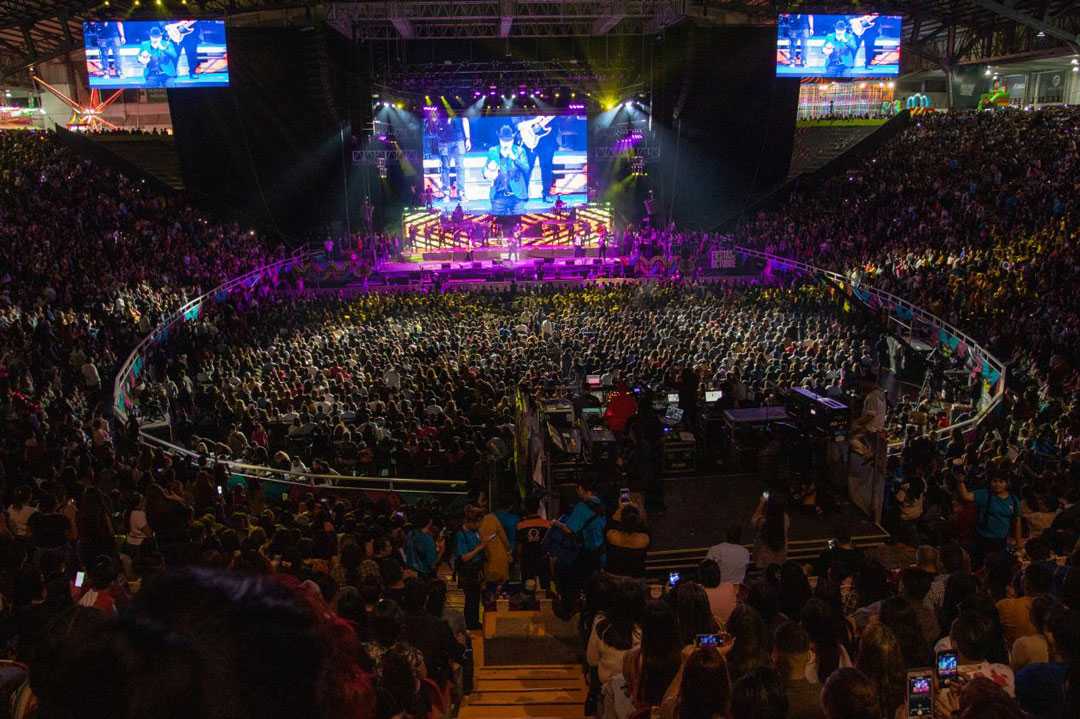L-Acoustics reinforces Fiestas de Octubre
- Details

Bringing together more than one million people, the 32-day festival is filled with a bountiful display of popular culture and fine arts, mariachi music, and a spectacular spread of traditional food, Mexican beer and wine. This year, the explosive energy of the festival was matched by the sound quality of an L-Acoustics K2 loudspeaker system.
The AEEJ (Agencia Estatal de Entretenimiento de Jalisco) was in charge of operating Fiestas de Octubre 2019, which has been running since 1965 in the Benito Juárez Auditorium, as well as in different locations of the state of Jalisco. The chosen rental partner was Mexico City-based LOGRA which has long-standing experience of supplying equipment to festivals, corporate events and, more recently, on local tours. The company is well-known within the industry and has earned a solid reputation through events such as the Mexican Independence Day Celebration, Corona Music Fest, Corona Sunsets, Rockampeonato Telcel, Arcadia, F1 Grand Prix Mexico and other high-profile projects.
As the festival grows year-on-year, attracting ever higher numbers of people and more artistic acts, the challenge for LOGRA was to deliver an outstanding audio system that would once again raise the bar for an event of such enormous dimensions.
Jonathan de la Peña, sound reinforcement specialist at dB Audio Production Service Group, was responsible for producing the design and aligning the audio system for the main fórum area, which holds around 16,000 people. The key issue to tackle was high levels of reverberation.
“From an architectural perspective, the venue has a curved ceiling made of metal sheets with no acoustic treatment,” says Peña. “The floor is made of concrete and the seats around the main pit floor are stadium-style fixed plastic chairs. Besides that, there is a big concourse around the seating area in the upper area which would normally not be taken into account for the coverage of the system.”
“As a local, I have worked in this place many times and watched a number of concerts there and, normally, they would just hang speaker clusters to take care of the arena,” adds Peña. “They would put the top box of the array pointing straight at a 0º angle to the last row and then start to splay it down. I have always thought this way of doing it sends a lot of energy to unnecessary parts of the room.”
Jonathan knew that he needed to place a higher angle of incidence over the audience, so he decided it was necessary to go higher and needed a ‘laser precision’ wave guide. Originally the idea was to do the design using only V-DOSC cabinets, but after running the first test he quickly realised that with the concept he had in mind, which included flown subwoofers, he needed cabinets that would let him splay the array more, and that the rigging would also allow for an overall steeper angle.
“That was when we switched to K2 for the main PA,” says Peña. “With K2 we were able to achieve the angles I wanted whilst leaving spare kilograms for the rigging department to hang the K1 subs on the same steel beam. With that, the sound quality was guaranteed.”
V-DOSC was still used for the out-fills, and dV-DOSC was utilised to cover all fills. Four stacks of SB28 subs in cardioid mode were used for the audience pit area. “The rest depended upon having 32 shows with a full audience, as humans are my favourite sound-absorbing material,” jokes Peña.
The final design comprised two main hangs of 14 K2 with three Kara as down-fill, and two hangs of eight K1-SB flown behind, plus two hangs of 12 V-DOSC providing side-fill. Three stacks of two dV-DOSC were positioned on the stage lip for front-fill, with three dV-DOSC ground stacked stage left and right for out-fill. Sixteen ground stacked SB28 subs - four stacks of four each - were positioned in front of the stage. Stage monitoring was via 13 115 XT HiQ, with a further 115 XT HiQ and an SB-18 for drum-fill.
(Jim Evans)
















